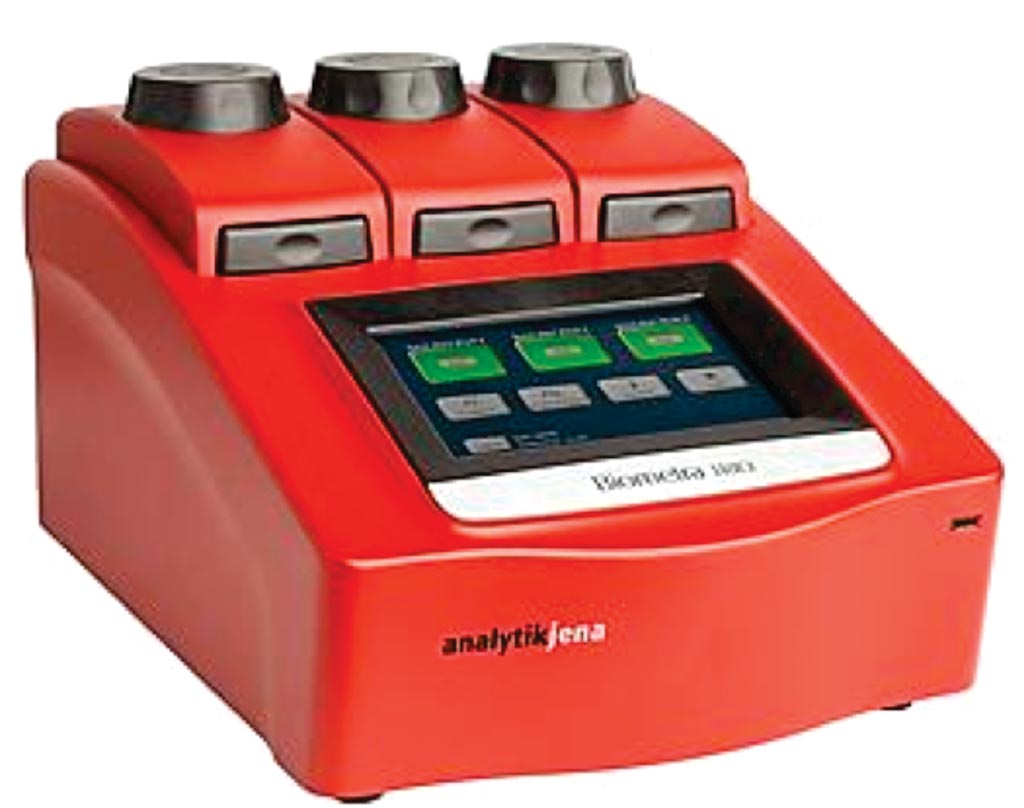Methods Compared for Chagas Disease Diagnosis
By LabMedica International staff writers
Posted on 08 Aug 2017
Chagas Disease (CD) is a chronic infectious disease caused by the protozoan flagellate Trypanosoma cruzi. In endemic countries, CD is transmitted mainly through the contact with feces of different triatomine bugs. Due to increased migration, CD has become an international health problem.Posted on 08 Aug 2017
CD presents itself in two phases: whereas the acute phase is dominated by unspecific or no symptoms at all, in the chronic phase cardiac and/or gastrointestinal symptoms can occur after a long asymptomatic interval. Reliable diagnosis of chronically infected people is crucial for prevention of non-vectorial transmission as well as treatment.

Image: The Professional Standard TRIO thermal cycler provides three independent 48 well blocks and heated lids in one housing (Photo courtesy of Biometra).
European scientists led by those at the Medical Center of the University of Munich (Germany) tested samples consisting of 50 human EDTA blood samples that were previously tested positive by enzyme-linked immunosorbent assay (ELISA), immunofluorescence antibody test (IFAT) and polymerase chain reaction (PCR) for T. cruzi in the Instituto de Salud Carlos III, (Madrid, Spain) during 2010–2013. This study compared four distinct PCR methods for detection of T. cruzi DNA for the use in well-equipped routine diagnostic laboratories.
The team chose two conventional and two real-time PCR methods for closer evaluation. DNA was extracted of T. cruzi-positive and negative patients' blood samples and cultured T. cruzi, T. rangeli as well as Leishmania spp. One conventional and two real-time PCR methods targeting a repetitive satellite-DNA sequence as well as one conventional PCR method targeting the variable region of the kDNA minicircle were compared for sensitivity, intra- and interassay precision, limit of detection, specificity and cross-reactivity. For two methods the Professional Standard thermal cycler was operated, and for the other methods, the CFX C1000 Real-Time thermal cycler was used.
The team found that out of the 50 previously positive tested samples by serology and PCR, 44 samples were detected by all four methods. One method detected T. cruzi in all 50 samples. Potentially cross reactive agents (L. tropica, L. donovani, L. infantum, L. braziliensis, L. major, T. rangeli and T. brucei) showed similar results in all four methods. The costs of consumables are significantly cheaper for conventional methods than for real-time methods. The price of the conventional methods was below EUR 1/test, while it is around EUR two and eight per test for the relay time methods. The study was published in the July 2017 edition of the journal Diagnostic Microbiology and Infectious Disease.
Related Links:
Medical Center of the University of Munich
Instituto de Salud Carlos III














